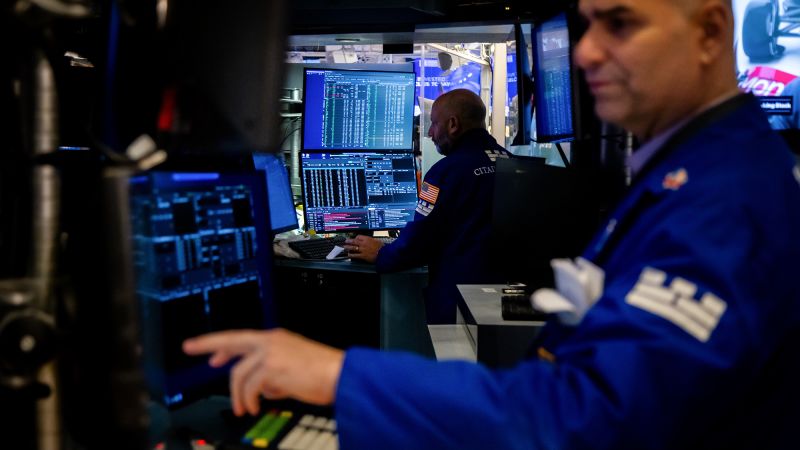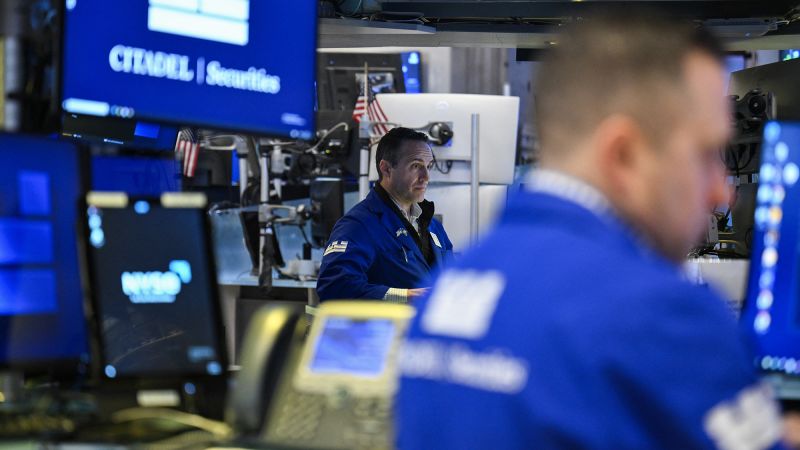On a turbulent Monday, U.S. stock markets faced a significant downturn, with the Dow Jones Industrial Average plummeting nearly 972 points, translating to a 2.48% decline. This drop reflects ongoing investor anxiety over tariff uncertainties and President Donald Trump’s escalating campaign against Federal Reserve Chair Jerome Powell. As the day progressed, the S&P 500 and Nasdaq Composite also experienced declines of 2.36% and 2.55%, respectively, marking a grim outlook for the markets.
Market Reaction to Political Turmoil
The sell-off was pervasive, affecting almost every company listed on both the Dow and the S&P 500. Following a disappointing week, these major indexes are now poised for their worst monthly performance since 2022. Investors are clearly reacting to the political climate, especially Trump’s recent comments about Powell, which have left Wall Street on edge.
- Dow Jones: Down 972 points (2.48%)
- S&P 500: Down 2.36%
- Nasdaq Composite: Down 2.55%
The U.S. dollar, typically a safe haven, also suffered, dropping over 1% to its lowest level in more than three years. This decline in the dollar’s value is indicative of a broader loss of confidence among investors.
Trump’s Criticism of Powell
Trump’s discontent with Powell has been vocal and unrelenting. Just last Thursday, he publicly criticized the Fed chair on social media, claiming that his “termination cannot come fast enough.” This outburst coincided with the European Central Bank cutting its benchmark interest rate, highlighting a stark contrast in monetary policies.
“I’m not happy with him,” Trump stated, expressing his frustration over Powell’s decision not to lower interest rates. He emphasized, “If I want him out, he’ll be out of there real fast, believe me.” Such sentiments resonate with concerns about the Federal Reserve’s independence, a cornerstone of its operations.
Tariffs and Economic Implications
The ongoing trade tensions are exacerbating the situation. Powell recently warned that Trump’s tariffs could have unprecedented effects on inflation and economic growth, complicating the Fed’s ability to adjust interest rates effectively. Analysts like Sam Stovall, chief investment strategist at CFRA Research, have noted that Trump’s attempts to influence monetary policy could have detrimental long-term effects on market stability.
Investor Sentiment and Safe Havens
As stock prices decline, investors typically flock to safe-haven assets like government bonds and the dollar. However, recent trends show a shift, with many opting for gold instead. This year, gold prices have surged by nearly 30%, reaching record highs as confidence in U.S. economic policy wanes.
Krishna Guha, vice chairman at Evercore ISI, pointed out that the market’s reaction underscores a growing skepticism regarding Trump’s economic strategy. Analysts from Macquarie echoed these sentiments, linking the dollar’s decline to concerns over the Fed’s autonomy and stalled trade negotiations.
Upcoming Earnings Reports
Looking ahead, Wall Street will be closely monitoring first-quarter earnings reports amid ongoing tariff uncertainties. Notable companies such as Tesla and Alphabet are set to release their earnings, and investors will be keen on executive forecasts for the year.
- Tesla (TSLA): Report due Tuesday
- Alphabet (GOOGL): Report due Thursday
“Tariffs will remain a significant concern, but investors are likely to shift focus to earnings reports,” Stovall remarked, suggesting that the upcoming weeks will be crucial for market sentiment.
In summary, the combination of political strife, tariff uncertainties, and fluctuating investor confidence has created a volatile climate for U.S. markets, leaving many to wonder about the future stability of the economy. As the Federal Reserve prepares for its next meeting in May, the outcomes will be critical in shaping market expectations.










